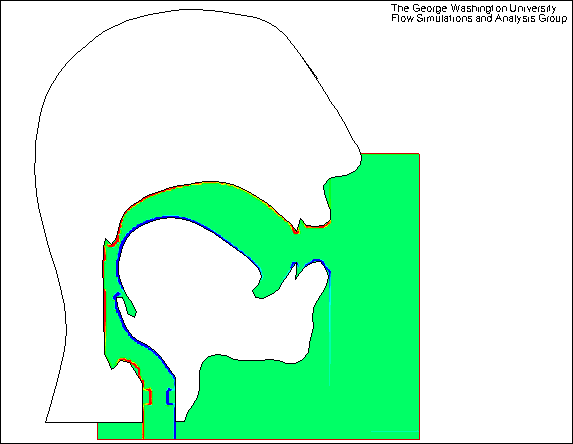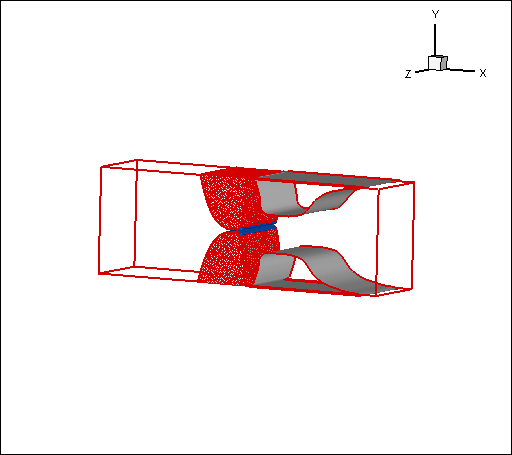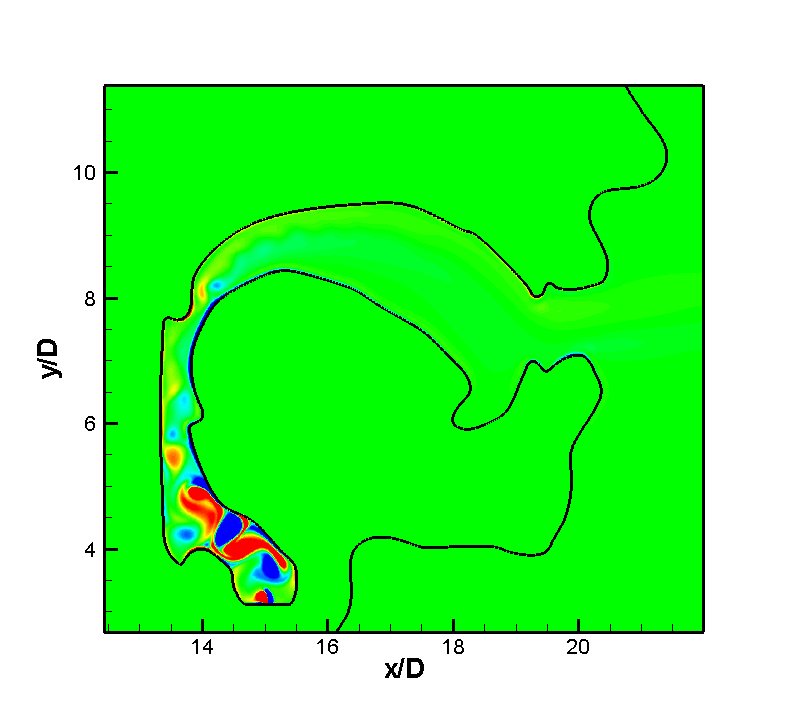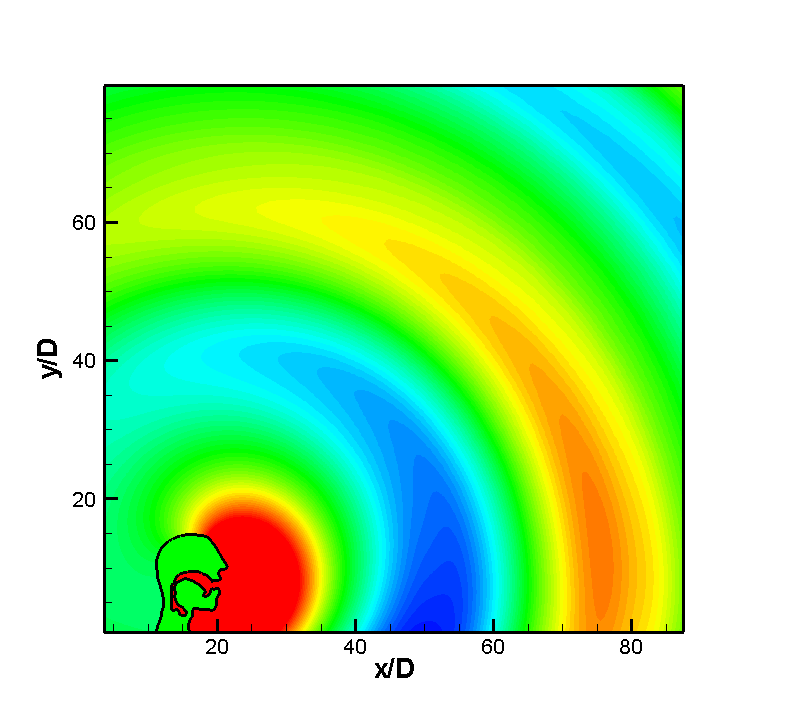Phonation
Computational Modeling of Phonation in Healthy, Diseased and Surgically Modified Larynges
It is estimated that in the United States about 2.5 million people suffer from vocal fold paresis or paralysis. Medialization laryngoplasty is the treatment of choice for this type of voice disorder where a uniquely configured structural support is implanted into the paretic vocal fold to facilitate the voice production. However, the failure rate of this procedure is as high as 24% even for experienced surgeons. One primary factor for the failure is that the surgeons have no means of predicting and adjusting for the effects of the implant on the vibratory characteristics of the paralyzed vocal fold.
Vocal fold vibration and phonation result from a complex biomechanical interaction between glottal aerodynamics and the vocal fold tissues, and variations in the laryngeal anatomy of individual patients make phonation a more complex problem to address. A realistic computer based biophysics model, which is based on phonatory vocal fold functions and glottal flow, and incorporates patient-specific anatomical characteristics, could be used to predetermine the implant shape and location, and potentially reduce the revision rate for the surgery.
Our group is developing develop a high-fidelity model of the vocal fold vibration and phonatory aerodynamics. The computer model is being used to simulate the fluid dynamics and vocal fold vibration during voice production for normal, diseased, and surgically altered larynges; to identify patient-specific phonatory characteristics by understanding physics of phonation, and ultimately to guide the surgeon in determining the optimal location and size/shape of the implant.
 |
 |
Direct Simulation of Voiced Sound Generation
 |
 |
The source of voiced sound is the flow rate fluctuation in the vocal tract caused by the vibration of vocal folds in the larynx. The glottal flow rate fluctuation generates monopole sound in conjunction with the acoustic response of the vocal tract, and this monopole sound is the dominant component of voiced sound. The acoustic system of the vocal tract can be considered as an open-ended duct and acts as a resonator for acoustic waves.Therefore, the shape of vocal tract has a significant effect on the actual voiced sound generation. We directly compute the voiced sound generation for a given time-dependent glottal flow rate and vocal tract geometry. We also consider the propagation of this sound into the ambient region outside the speaker’s mouth. The incompressible Navier-Stokes (INS)/linearized perturbed compressible equations (LPCE) hybrid approach is employed with the high-order immersed boundary method.